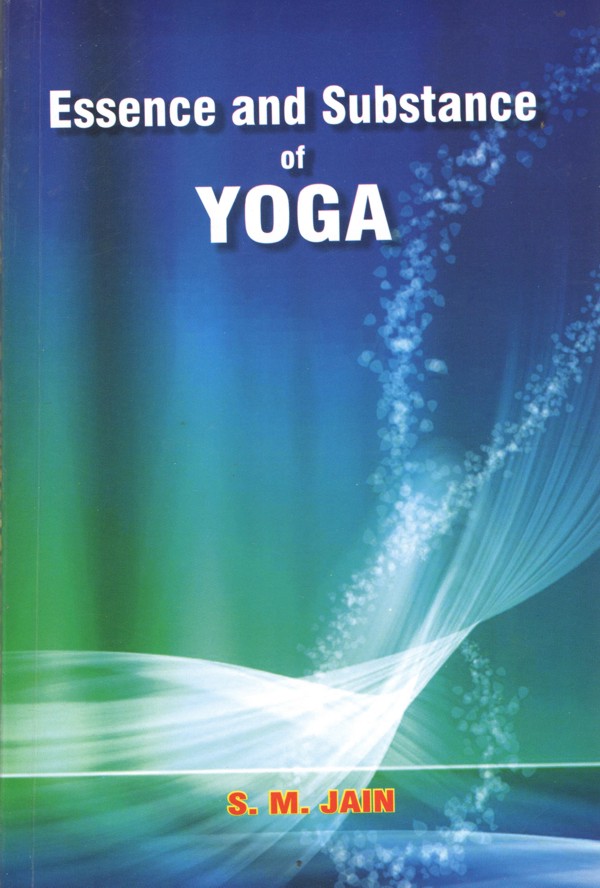Antithetic Negativity In Yoga Scriptures
Yoga is union. It is addition not subtraction, positive not negative, love not hate, mutualism not predation, association not dissociation, cooperation not competition, pleasure not, sorrow, harmony not chaos and compassion not repulsion. The objective of yoga is happiness not only for one-self but for others also. If any effort which is self-confined for good or happiness for self only, it is selfishness not yoga. As such any concept of negativity in yoga is its antithesis. It is therefore unfortunate that even great yoga teachers and scholars have viewed this world, its bounties and beauties and its mutuality and interdependent interrelations as causes for sorrows, miseries and all sorts of problems for a yogi.
This antithetic concept appears to be the result of medieval history as most of the available literature was written around that period since about 2000 years and after that. During long years of history this country suffered from incessant repeated invasions of barbarians who indulged in rampant loot, arson, rape, cruelty, tortures and all sorts of heinous atrocities. Even recent historical memoirs of Shambhaji, son of Shivaji reveal the scenario. Shambhaji revolted against his father and joined Mughal army commander Afzal Beg. He has written elaborate memoirs. He has mentioned that whenever, wherever the Mughal armies passed through the villages and towns en route atrocities of loot, arson and rape were committed on inhabitants. It was all so fearful and frightening that people would try to escape and run away for protection of one self, leaving even near and dear ones. It was a situation of psychological urge of self protection as is seen in case of fire in a house when the person as a fist impulse runs out and it is only later that he thinks about a near and dear one to rescue if possible. The atrocities during the invasions were of such a scale that people started viewing the world as miserable and affinities of cooperative interrelations were shattered. People started believing that all relations are selfish. The governance in the country was also fragmented and numerous rulers big and small were fighting among themselves, helping the invaders against each other rather than protecting the people in their areas. The people lost the will even to make any effort to unite and prepare to fight for protection. It was in this scenario of utter helplessness that concept and practice of surrender to one God or one or other deity came and people left everything to God or deity, relinquishing or denying the potential of human responsibilities, endeavour and effort. Devotional yoga is outcome of this period because whole psyche of people at large got so much depressed that nothing else was thought to be possible.
Such attitude of inaction is prevailing and growing in modern times also in respect of hopes promised by pseudo saints, astrologers, ritualists, tantriks etc. who for their own selfish gains and professional income mislead people that successes, good fortunes, cures from diseases can be obtained by performing certain rituals, worshiping planets, wearing amulets, reciting hymns etc. without any personal effort. Some cheats even undertake rituals, tapas etc. on behalf of clients and promise to transfer thus gained fortune (Punya) to them. This is gross violation of precepts given in all scriptures of all religions that good fortune (Punya) can only be earned by one’s own efforts, good conduct, austerity, charity, compassion, emotional control etc. There is no substitute to this. But people at large have inherent weakness to shirk action and want to get things without effort and this weakness is exploited by professional cheats in garb of religion, astrology, tantra etc.
The following quotes from canonical scriptures give melancholy and antithetical view of the world:
(i) Birth in the world is full of sorrow and sufferings. (ii) Pleasures born out of contacts with objects are sources of pain. (iii) In Jnanarnava by Shubhchandracharya the view of the world is extremely negative:
(a) The world is to be understood as drowned in sea of miseries | | 1/38 | |
(b) The world is like a dense forest enveloped by fierce fire of miseries | | 1/49 | |
(c) All human relations are cause of adversity | | 2/9 | |.
(d) The human body is always engulfed in various diseases, is full of impurities and is prone to down fall | | 2/8 | |Hopefully this negative view point about human body is repudiated in the following:
It is the physical human body which is instrumental for all types of good deeds - spiritual or religious. Good health is important foundation for morality, finance, all activities including sex and salvation. The foremost priority is to care for health of body because all other aspects in life exists only if body exists. This view is now accepted by Jain Yoga teachers also. Acharya Mahapragya is very explicit that human body is very precious, should be cared properly and kept healthy. Physiologically the cleaning system in human body is so perfect that no other system in man-made factories or municipal management can match. It is even adapting and withstanding the pollution of air, water and food which is slow poisoning. The fact is that diseases or problems of body are only because of unnatural wrong life styles and increasing pollution.
Human body is as if engulfed in nectar of peace, wealth and happiness. Shubhchandracharya in Jnanarnava 2/20 further states:
The human body is full of diseases and miseries of old age which are imminent and inherent in youth-age.
(iv) Similar views are mentioned in Yogadrishtisammuchhaya by Acharya Haribhadra Suri:
- A person who welcomes the worldly existence is petty, profit hungry, miserable, jealous, fear-stricken, ignorant and busy doing futile things | | 4/76 | |
- The whole course of worldly existence is misery | | 3/44 | |
- Worldly activity of whatever kind is akin to salty water | | 3/62 | |
- Even the worldly enjoyment required as a result of virtuous acts is conducive to undesirable consequences just as fire produced even from sandalwood also burns | | 5/160 | |
(e) In Yogabindu Acharya Haribhadra Suri wrote:
How the body that stores chyme, blood, flesh, fat, bones, marrow, semen, entrails, excreta, to be pure and holy? | | 4/72 | |
His (Samyagdrishti’s) disgust with worldly existence is absolutely genuine, for he has properly realised the worthless character of worldly existence | | 3/341 | |
(v) Acharya Hemachandra in Yogashastra wrote:
How the body that stores chime, blood, flesh, fat, bones, marrow, semen, entrails, excreta, to be pure and holy? | | 4/72 | |
(vi) The world is full of miseries Birth is sorrow, death is sorrow, disease is sorrow, old age is sorrow. - Uttaradhyana Sutra 19/15
In Jain stream of yoga it is prescribed that twelve “Anuprekshas” (Concepts or feelings) regarding the world, relations, body and religion should be contemplated in conjunction with Dhyana (Meditation). Of these first six are negative concepts. The twelve concepts (Anusrekhas) as mentioned by Hemchandracharya in Yoga Shastra 4/55-56 are:
Equanimity is attained through detachment which is facilitated and strengthened by contemplation of following twelve concepts and feelings (Bhavanas or Anuprekshas):
All substances animate and in animate in the universe are mutually helpful, supportive and reinforcing. Acharya Kanaknandi has summarized in this stanza the stanzas 5/17 to 5/22 in Tattvartha Sutra by Umaswati. According to Jainism the universe is comprised of six substances, their infinite modes and variations. The six substances are Dharma, Adharma, Akasa, Pudgala (Matter), Jiva (Living beings) and Kala (Time). All these six substances are mutually helpful:
Dharma and Adharma substances are instrumental for motion and stay of Jiva and Pudgala and it is their benevolence | | 5/17 | |
Akasa i.e. space gives place to all | | 5/18 | |
Pudgala i.e. matter is instrumental for formation of body, speech, mind, happiness, miseries, life and death of Jiva (living being) | | 5/19-20 | |
All life forms are for mutual benefit | | 5/21 | |
Kala or time is instrumental for actions, interactions of Jiva and Pudgala | | 5/22 | |Contrary to the above the concept of helplessness will tear away the entire fabric of social organization, the relationships between mother and child, husband and wife, friends, neighbours, families, groups and nations. In times of distress and situations like earthquakes, floods, accidents etc. people, groups, societies, nations must and do help each other.
Out of these twelve concepts or feelings the last six are religious prescriptions in Jainism to proceed on the path and eventually attain salvation. The first six are negative, detrimental and would only result in despondency, depression and distress. Pessimism is harmful and may be even fatal.
 S.M. Jain
S.M. Jain
